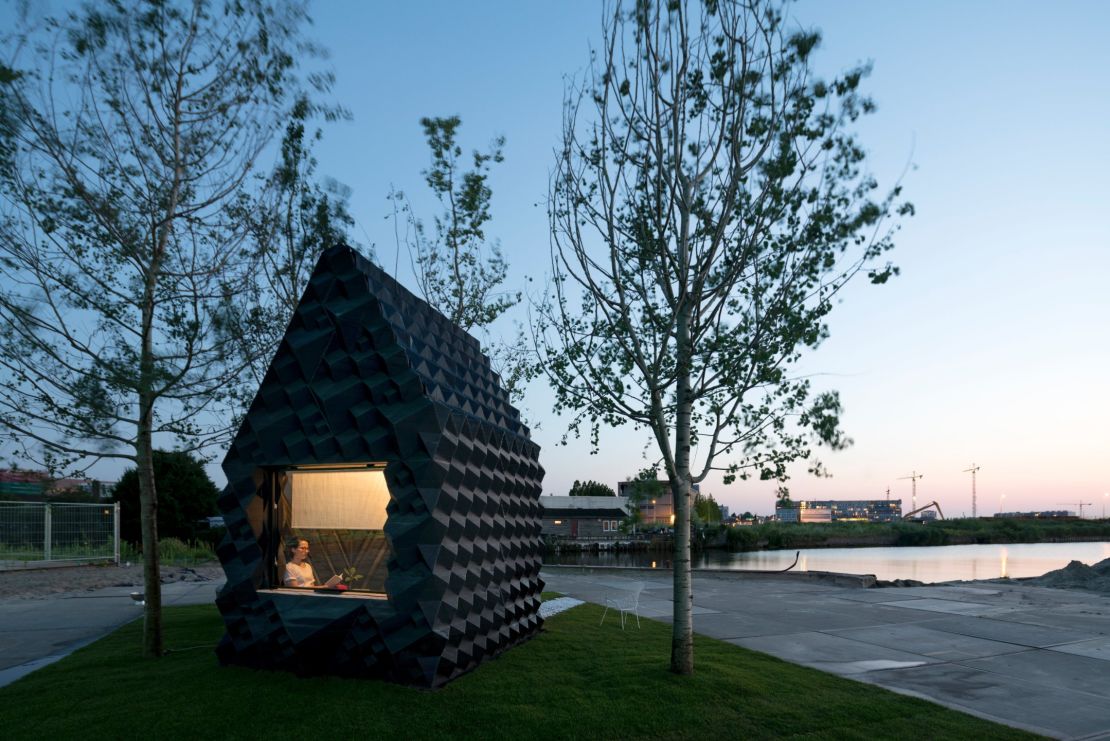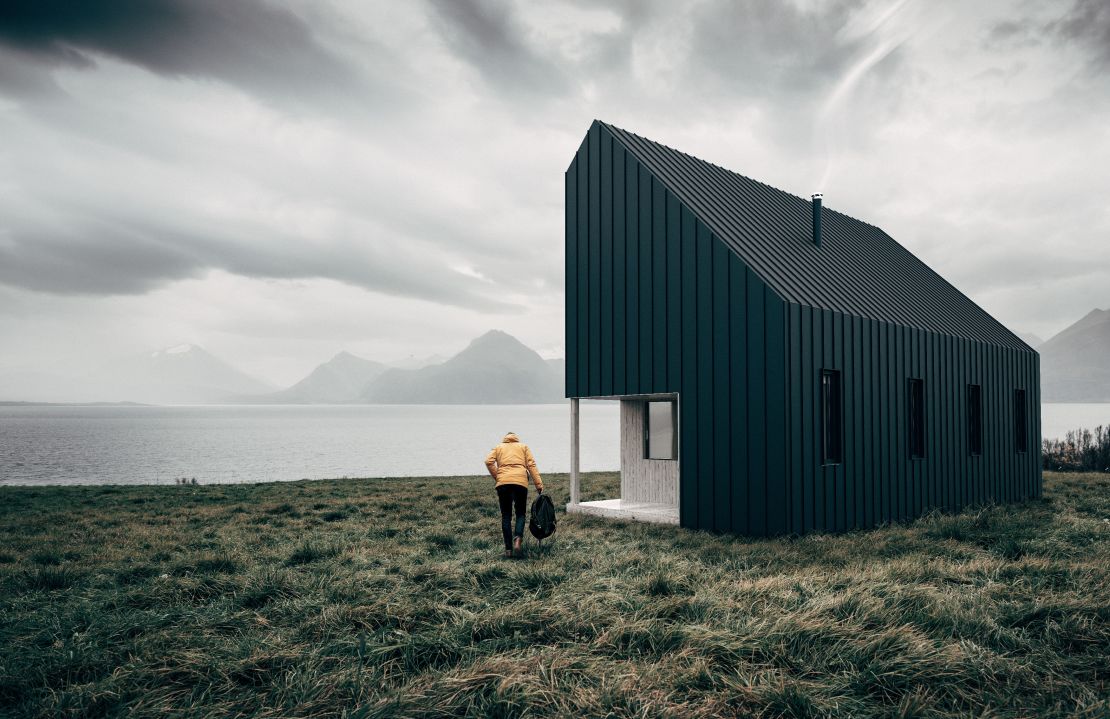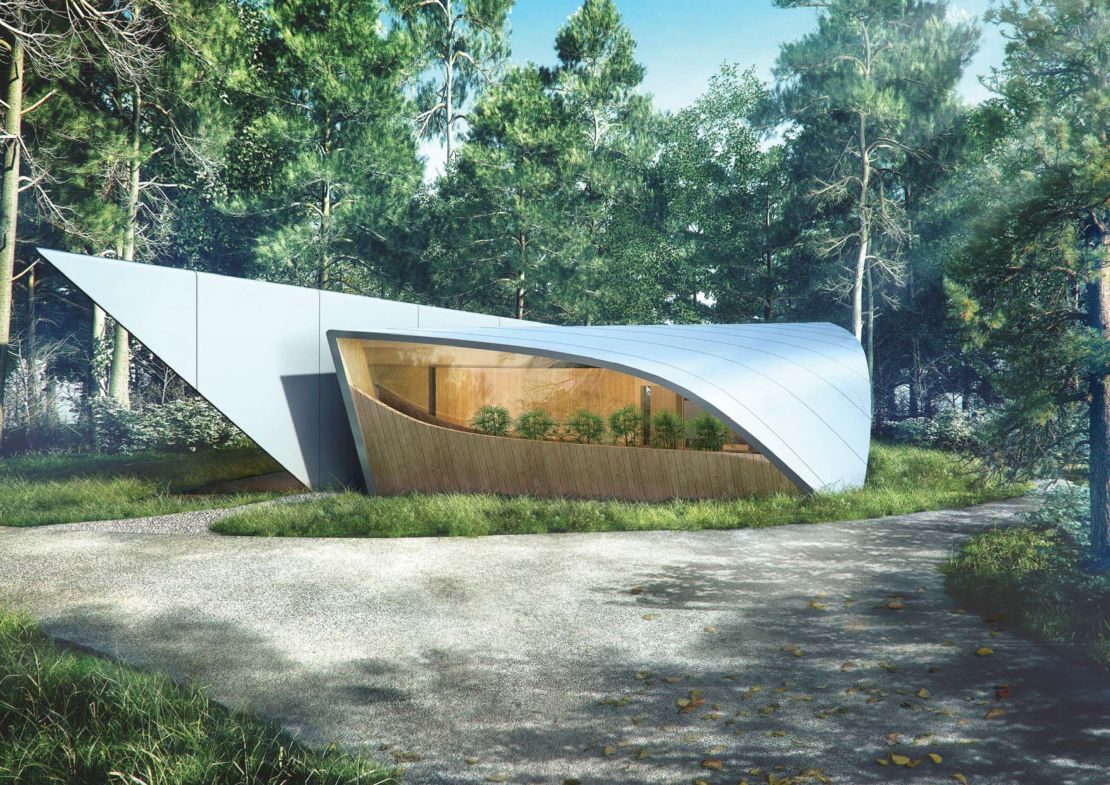If you’re looking to hole up in the middle of nowhere, there’s a hut in a box for that.
Back in the days of gloom post World War Two, prefab homes – structures prefabricated in sections in a factory and then assembled on site – were built en masse as temporary solutions for those who had been “bombed out”.
Just over 70 years later, prefab houses are still considered affordable alternatives to building homes from scratch.
Prefab pioneer Jean Prouvé designed his “demountable house” in the 1940s as a potential solution for the housing crisis in France. These inexpensive homes were rapidly built from steel and wood, assembled by hand, and supported by a two-legged load-bearing structure.

Today prefabricated buildings are used as temporary relief for those who have lost their homes to natural disasters, refugees, as well as a quick fix for housing crises.
But prefab is increasingly becoming an attractive option for constructing everything from cabins in the wilderness to high-end designer homes for city slickers.
One Canadian company has even gone as far as creating DIY cabins which come straight out of the box, complete with step-by-step instructions on how to assemble them.
Hut-in-a-box

Backcountry Hut Company grew from a need for recreational refuge points for outdoorsy folk in remote locations.
Avid backcountry adventurer, Wilson Edgar, dreamt up the idea of customizable huts that could be easily pieced together on-site by a group of people.
“When someone takes a house project today they basically give up control as soon as they start the project,” Edgar tells CNN. “This is putting that control back in their hands.”
Edgar teamed up with Principal Architect of Leckie Studio Architecture + Design, Michael Leckie, to tackle the design.
The huts come in two distinct styles – backcountry and frontcountry – each with multiple configurations.
The base model is a studio loft measuring 191 square feet, with a kitchen and living area on the ground level and sleeping quarters for two to four people on the top floor.
However, modules can be combined and the hut can be extended to fit up to 30 people.

“One of the values in the system is that it is scalable and mass customizable,” explains Leckie, referring to various interior fitout options and exterior finishes.
This, according to Leckie, is one of the key differences between their huts and other “more rigid” cabins. Another is the ease with which it can be assembled.
“The building components are designed to such a size that they can be lifted by two people and put into place similar to almost like lego blocks,” says Leckie.
This is not to say the “kit of parts” can be slung over your shoulder like a sack of tent poles. In fact, the pre-module shell, timber frame skeleton, window system, doors, cladding, and interior fitouts arrive in a 40-foot shipping container and need to be lifted by helicopter to locations inaccessible by roads.
While the hut’s structural components cost $150 dollars a square foot, the interior fitouts can add a significant amount, depending on the client’s taste.

Is prefab the answer?
Prefab homes are often considered to cut the spiralling costs of building a home, as well as the time it takes to build.
“For the average person building a custom home there are so many unknowns, and I think that a lot of people really struggle with the perceived lack of control through the process,” says Leckie.
“What we have here is a product that comes ultimately delivered, it’s a fixed-price solution.”
However, architect Charlie Lazor of Lazor Office – a design firm that specializes in the design and prefabrication of dwellings – is of the opinion that prefab isn’t always the answer.
“There is a perception that prefab will solve the problem of the cost of a home,” Lazor tells CNN.
“There are benefits to be had, and more benefits if the stars align, but it’s not a silver bullet, and it’s not going to solve a budget deficit.”
In 2005 the Minneapolis-based architect first introduced his panelized FlatPak house – a pre-fabricated, configurable house system.
Having designed and built many modular, FlatPak and stick built homes over the years, Lazor explains that there are multiple ways to do prefabrication. It all depends on the circumstances.
“For very remote work, the modular method is better as labour doesn’t exist, or has to come from very far away. So you have to get as much as you possibly can get done off site, and send it as complete as possible.”
One of the biggest challenges Lazor faces, however, is misconceived ideas about the benefits of prefabrication.
“The time advantage can be there but I wouldn’t say it’s a significant enough reason why someone should do a prefabricated house,” he says.
A prefab-ulous future

“As the market for prefabricated structures grow, so does the market for high-end precrafted work,” Robbie Antonio, CEO of Revolution Precrafted, tells CNN.
Revolution Precrafted commissions “starchitects” such as Zaha Hadid, Jean Nouvel, Philip Johnson, Ron Arad, Marcel Wanders, and Christian de Portzamparc, to design luxury prefab homes, pavilions, and even furniture.
“Prefabrication no longer means cookie-cutter construction, or one-size fits all design,” says Antonio. “It is moving towards a space where traditional construction methods give way to high-precision, and high-quality architecture.”


















